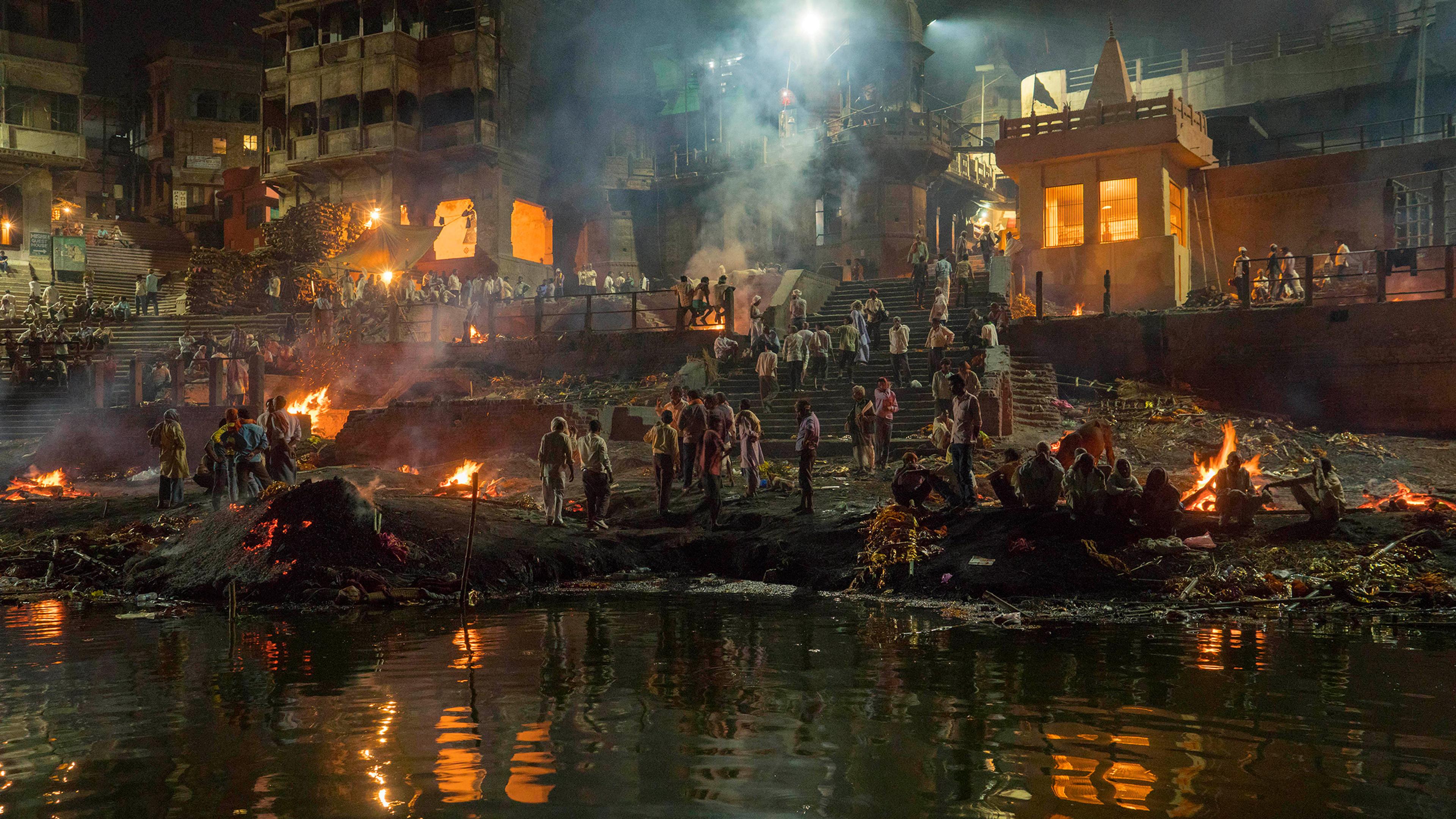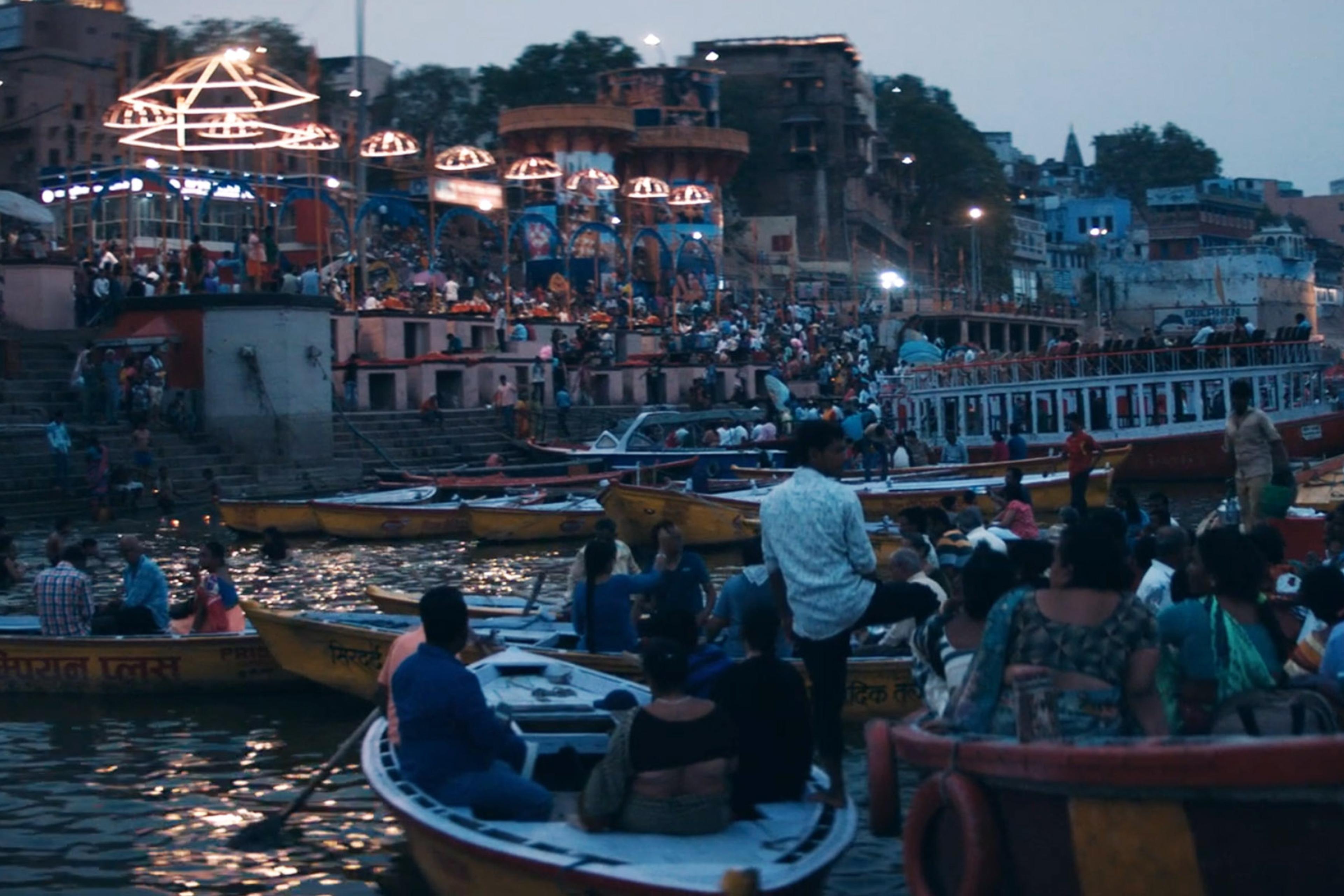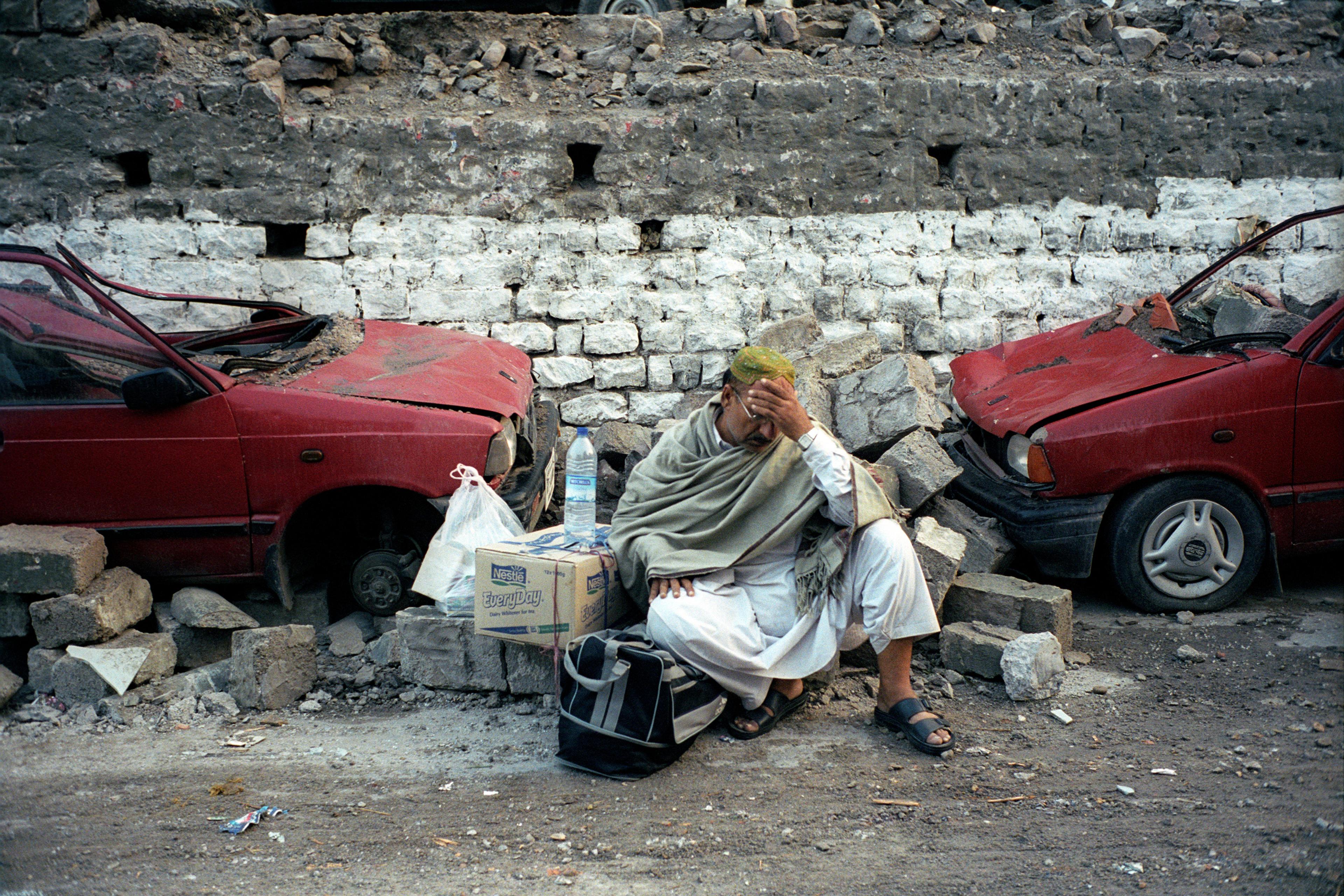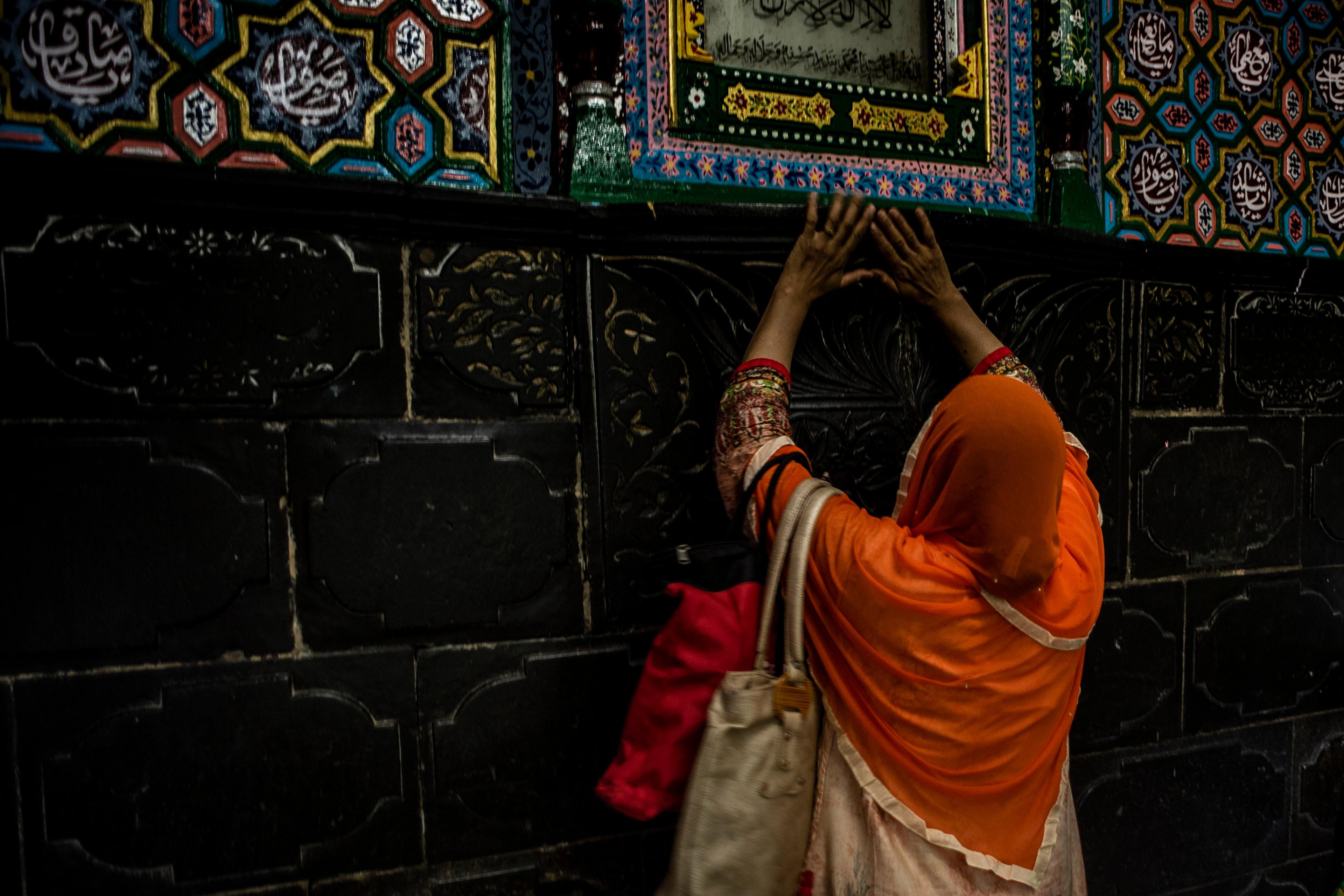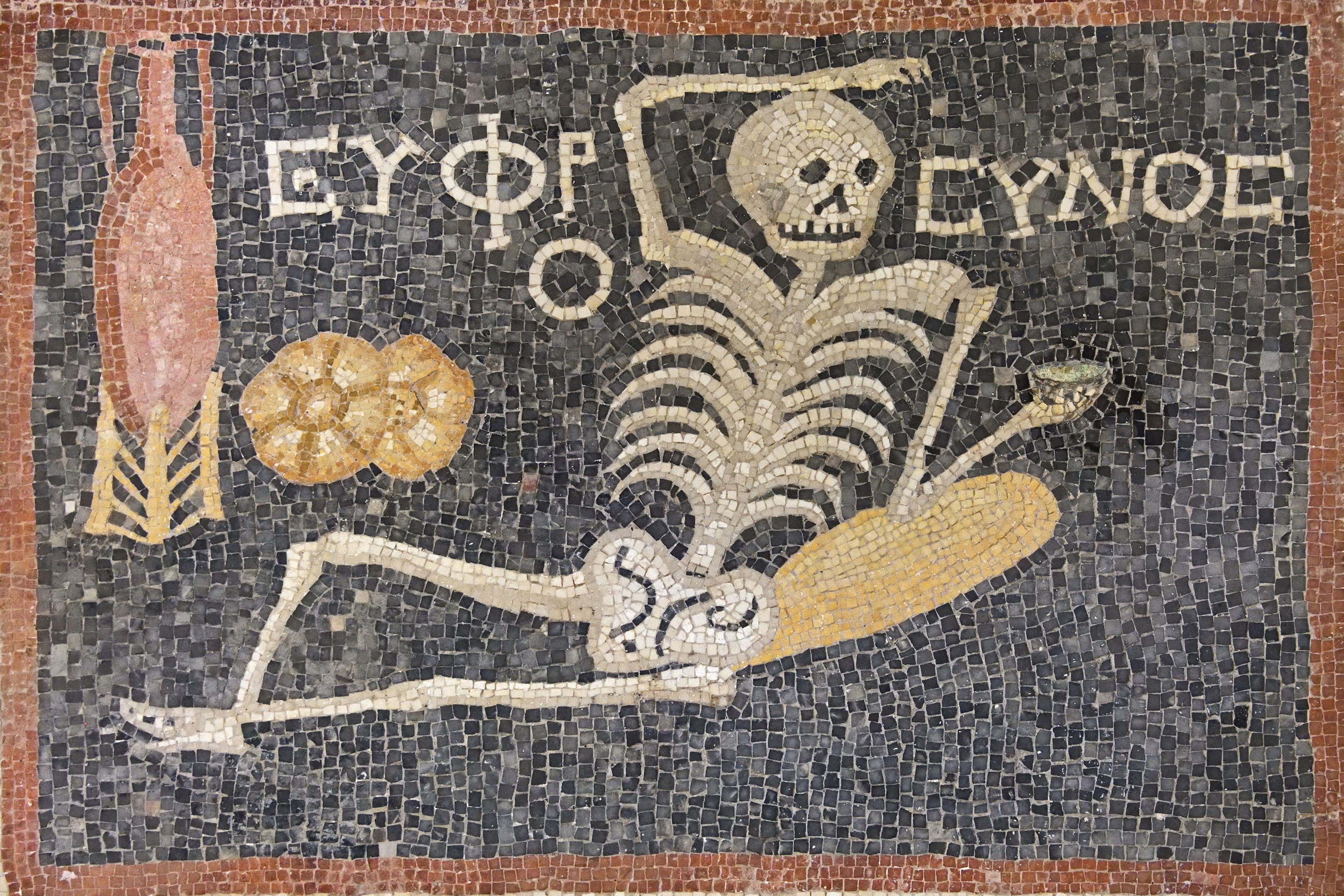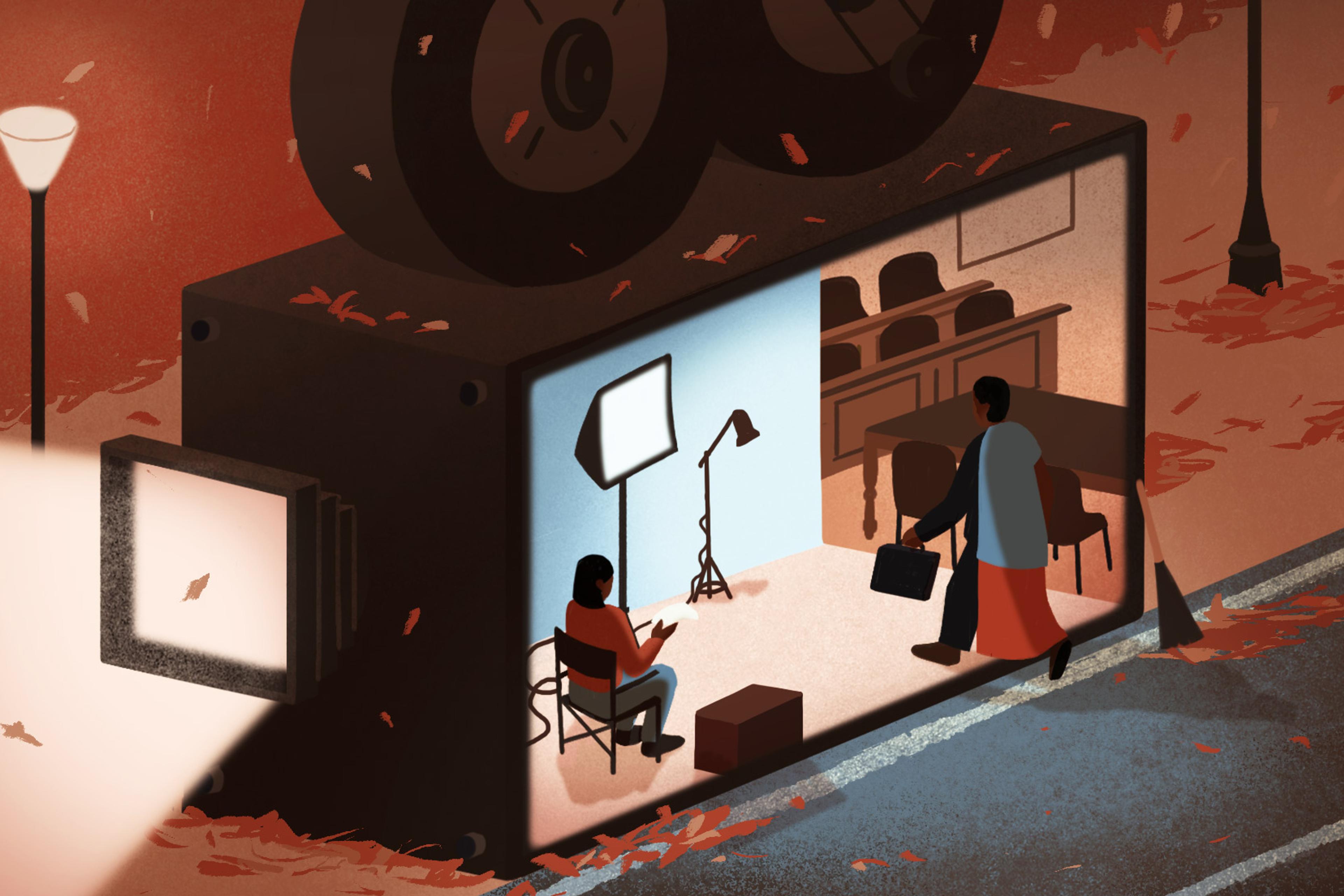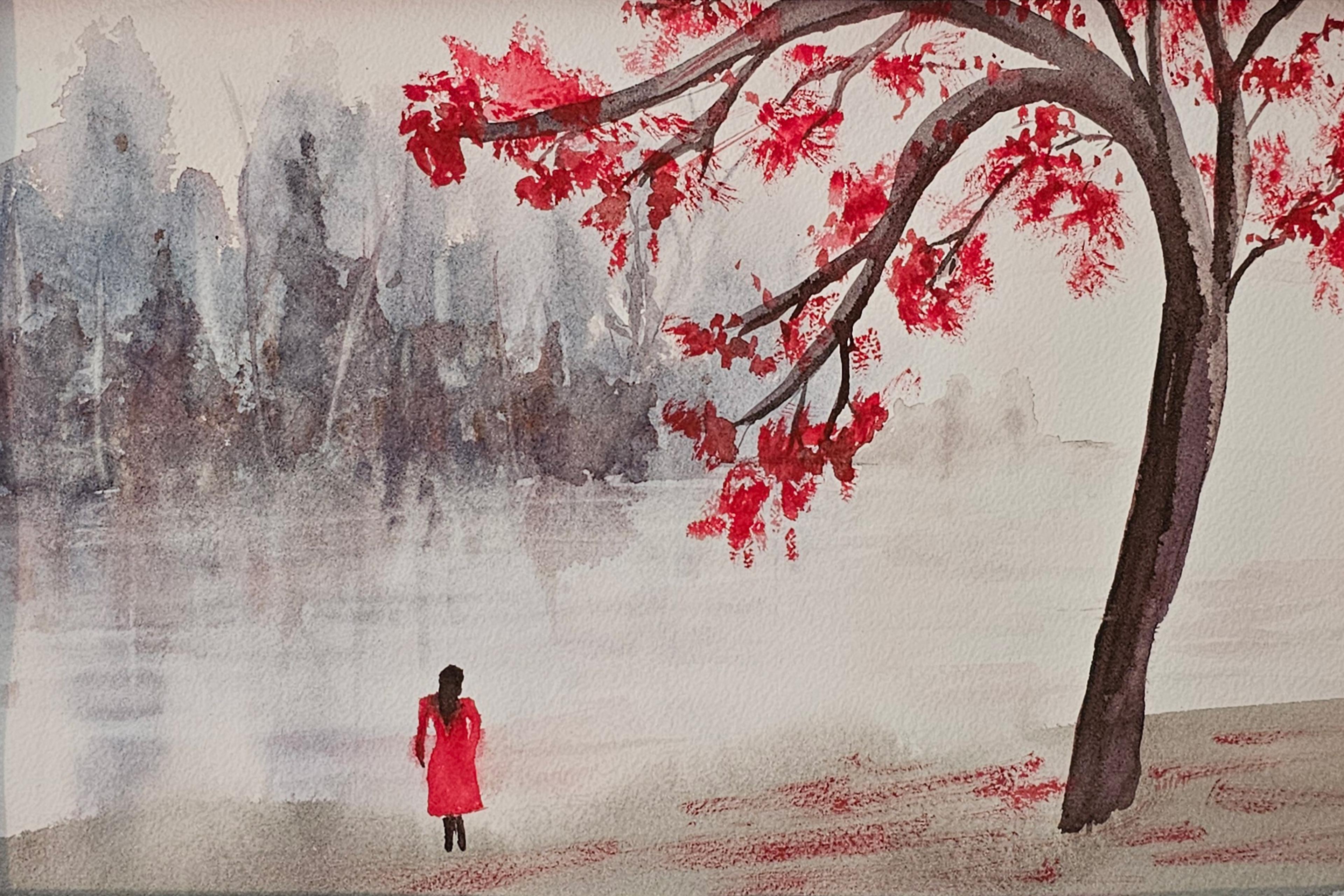A bright constellation of pyres burns as corpses are engulfed in flame. And the sky is stained black at Manikarnika Ghat, one of India’s most sacred cremation grounds. Here, beside the holy river Ganges, a tableau of death has been performed for centuries: every day, hundreds of dead bodies are entombed in wooden pyres before being subjected to open-air cremations.
Smoke hangs in the air like a dense veil, pierced by shafts of sunlight. Below, the ground is covered with layers of wet ash, mud, bamboo debris, garlands of squished marigold flowers and other discarded funeral goods. Cows laze in the sun, flicking their fuzzy tails, while buffaloes bathe in the river. Looking for scraps, stray dogs scour through heaps of litter. And, every few minutes, a small procession of men carries a corpse on a bamboo bier through the narrow alleyways that lead to the cremation ground. With each procession comes the steady, solemn chant: ‘Ram Naam Satya Hai’ (‘God’s name is the truth’). In the background, the shrill sound of temple bells competes with the staccato crack of axes splitting logs of wood.
In this corner of Banaras (Varanasi), a religious city located in northern India, in the state of Uttar Pradesh, a Dalit sub-caste known as the Dom ply their trade: corpse-burning. Banaras is believed to be the abode of Lord Shiva, the god of annihilation and creation, and members of the Dom community work here, at cremation grounds such as Manikarnika Ghat (and its sibling cremation site, Harishchandra Ghat), because this is where the almighty Shiva whispers the ferryboat mantra into the ears of the dead and chaperones their souls to heaven. For devout Hindus, a dead person’s soul can receive moksha (liberation from the endless loop of death and rebirth) only when their body is cremated by the ‘sacred fire’. According to Hindu mythology, this sacred fire, which is exclusively in the possession of the Dom community, is believed to have been burning for centuries, its flame never once dissipating. Even today, visitors can see it alight at both the cremation ghats.
An open, public spectacle of bidding goodbye to a loved one as they are burned might seem eerie and unsettling to those living in societies where dying and grieving are quieter and more private affairs. As the cultural anthropologist Ernest Becker argued in 1973, the fear of death is a fundamental human motivator. In many societies, this fear leads to death being hidden or sanitised: decaying bodies are cleaned, embalmed and buried out of sight. Their physical reality softened or erased altogether.
In Banaras, cremations are performed in public. Here, death is considered intrinsic to the cycle of life, death and rebirth, and is an important aspect of one’s spiritual journey. This openness to death can appear strangely beautiful and humbling, especially when contrasted with cultures where death is kept at a distance. But, at Manikarnika Ghat, such visibility comes at a cost. Someone must keep the fires burning. Someone must sort through the bones. What price is paid by those who live in the near-constant presence of death?
As part of the Dalit sub-caste, members of the Dom community exist on the fringes, shunned, on the lowest rung of the social order. India’s caste system is an ancient hierarchy that assigns an individual’s position in Hindu society based on their family’s social and religious standing. At the apex of the caste pyramid are the Brahmins (priests, scholars and intellectuals), followed by Kshatriyas (warrior caste), Vaishyas (mercantile caste) and Shudras (labourers). For centuries, Dalits have been seen as the ‘outcastes’ who exist beyond the boundaries of the traditional caste pyramid. They have been deemed ‘unclean’, ‘inferior’, ‘polluted’ and ‘untouchable’. Even today, incidents of honour killings, flogging, discrimination in certain educational institutions, and other forms of violence against Dalits continue to be reported across India.
Within the Dalit caste, the Dom are an oppressed community designated by Hindu tradition to cremate the dead. This male-driven profession is an inherited one: passed on from a father to his son since time immemorial. Despite the Dom community’s crucial role in sacred funerary rites, they are viewed by most Hindus as a caste whose entire bloodline is ‘polluted’. It’s a grim and unsettling irony.
What he found most repugnant was the sight of bones crackling in the fire
The Dom identity is inextricably and intimately braided with the business of death. The men in the community work as cremators without any protective gear, labouring in extremely harsh and volatile conditions. Each corpse takes three to four hours to reduce to ash, and some workers can spend 18 to 20 hours tending the fires each day. During that time, they often burn their limbs while stoking the flames and severely damage their lungs from inhaling thick plumes of smoke. For each corpse they cremate, the men are paid anywhere between 200 to 250 rupees (less than $3). The work is dehumanising and exhausting. It deeply affects their physical and mental health. To cope, the cremators gravitate towards substance and alcohol abuse.
During the 2010s, I spent eight years researching the Dom community who burn corpses at Manikarnika Ghat. Some of these men described the grotesque sights they witnessed while engaged in cremation work. One worker, for instance, told me that he had cremated ‘corpses with smashed skulls, severed limbs, gunshot wounds, knife-torn torsos … [and people] who had died by suicide.’ What he found most repugnant was the sight of bones crackling in the fire, and flesh sliding off as it was subjected to the intense heat. Another cremator confessed: ‘If you see death over and over again, you will end up doing nasha [substance abuse]. Otherwise, you’re not human.’ Dehydration, prolonged exposure to heat and smoke, alcohol and drug addiction lead to myriad ailments and even premature death – many men who work at the cremation grounds do not live beyond their late 60s.
The cost of this work is not only borne by adults. Weighed down by the crippling poverty of their families, many boys from the Dom community (as young as five or six) are encouraged by their parents to work at Manikarnika Ghat as shroud-pickers. A shroud, or kafan as it is locally called, is a cloth that is draped over the corpse before it is delivered to the cremation ground. These shrouds come in colours of bright red, orange and yellow, and are often bedazzled with golden tassels and motifs. Before the corpse is placed on a pyre, the kafan is removed and cast aside. The boys work for long hours to scavenge these shrouds. Often, they wander and linger near the burning pyres, their eyes peeled for a flash of gold and colour. While they wait in anticipation, the heat leaves their clothes soaked in sweat. Their eyes are dry, and their matted hair is covered with ash and dust. But they patiently wait. Stealing shrouds is frowned upon by grieving families and, if the boys are caught, they are often beaten and chased away.
Dom children who manage to find the coloured shrouds can sell them to shop owners for a meagre sum. The shop owners then clean, smoothen and neatly repackage the shrouds before reselling them to mourning customers at a marked-up price.
A teenage cremator revealed that drugs allow his mind to ease up
I have watched groggy-eyed Dom boys scour the cremation ground late into the night, carefully collecting discarded kafans and stuffing them into gunny sacks. Many work as late as 4 am to financially support their families. Often, they end up sleeping at the cremation ground, using their tiny slippers as headrests. When these boys turn 11 or 12, they begin cremating corpses. Many of these children are left traumatised and begin having nightmares, but they lack the means and funds to process, understand or address their experiences. As a result, they often spiral into substance abuse.
Drugs, widely available near the cremation ground, are a way for Dom boys to cope with fatigue, hunger, the dreadful working conditions, caste-based discrimination and debilitating poverty. Ganja (marijuana), charas (hash), gutka (smokeless tobacco and crushed betel nut), beedi cigarettes and alcohol are all widely available near the cremation grounds, and allow the boys to work more swiftly and to endure high levels of heat and physical discomfort. A teenage cremator revealed that drugs allow his mind to ease up: ‘Then I can burn many bodies in one go. Otherwise, the fire whips me so terribly, I cannot bear it.’
The children are also expected to recover charred timber from remnants of burnt-out pyres at Manikarnika Ghat and lug them home. This wood is used by their mothers as cooking fuel in their small homes. Often, the wood the children haul is far more than the weight of their small frames. Bhola, a corpse-burner’s son I spent time with, told me that, when he was a young boy, he would carry the pyre wood back home for his family. ‘Sometimes, we’d even find pieces of flesh stuck to it,’ he said. The children grow up normalising death and internalising the grotesque and disturbing experience of watching cremations each day. But this normalising comes at a high cost.
While children from privileged backgrounds are protected by their parents from watching violent films and television shows, the Dom children are constantly exposed to death. In fact, when I asked another young man from the Dom community to describe his childhood while working at Manikarnika Ghat, he said: ‘Nothing was out of the ordinary. Everything was normal.’
For the Dom community, the shadow of death – the flames, the smoke and the unbearable stench of burning corpses – is not extraordinary. It’s the only world they have known. With no reprieve, the boys suffer stunted physical development and deep psychological scars. By seeking refuge in substance use, they numb themselves to a world that offers no escape. In time, illness sets in, claiming lives far too soon. In a place where death is ritualised, the living are quietly perishing.
Witnessing the compelling drama of fire and smoke at Manikarnika Ghat can stir mixed sentiments in many outsiders: awe, reverence, horror. However, the sacred fire burns only because someone keeps it alive. For men and young boys from the Dom community, this sacred Hindu ritual demands unrewarding, exhausting and dangerous labour. While the age-old tradition of open-air pyre-burning continues, we have to ask: at what cost?
This Idea is derived in part from the book ‘Fire on the Ganges: Life Among the Dead in Banaras’ (2023) by Radhika Iyengar published by HarperCollins India.
